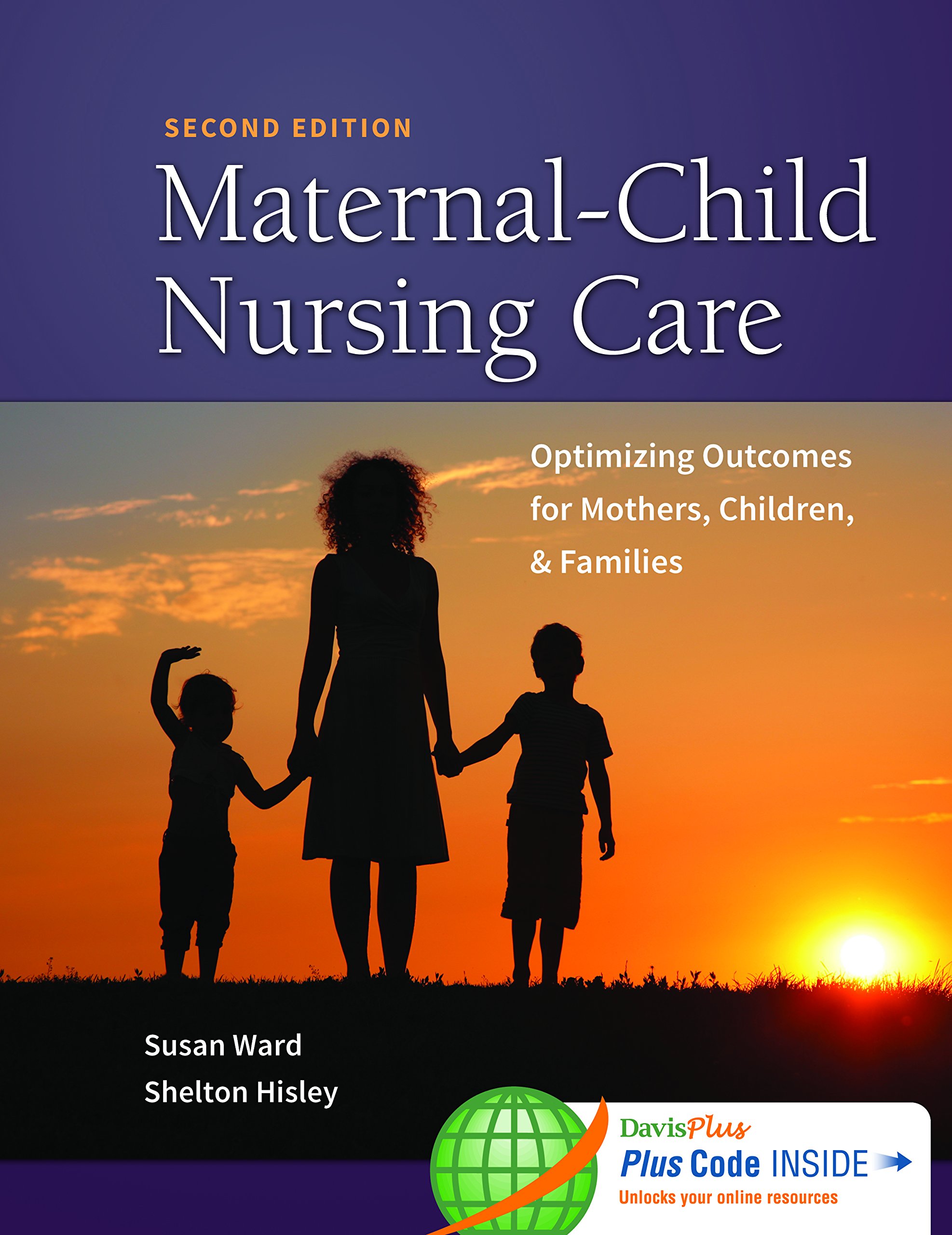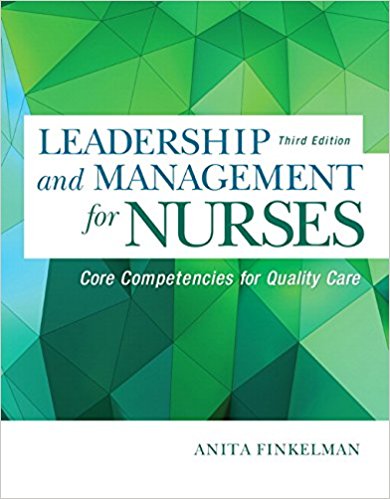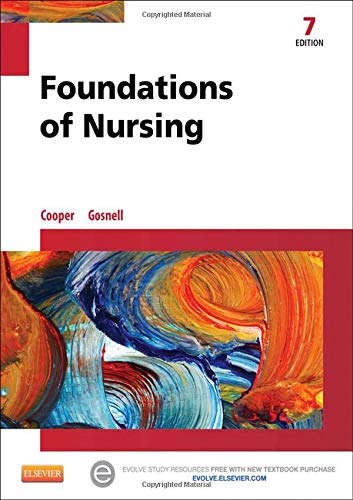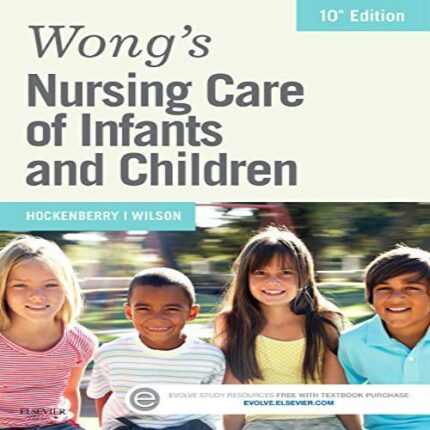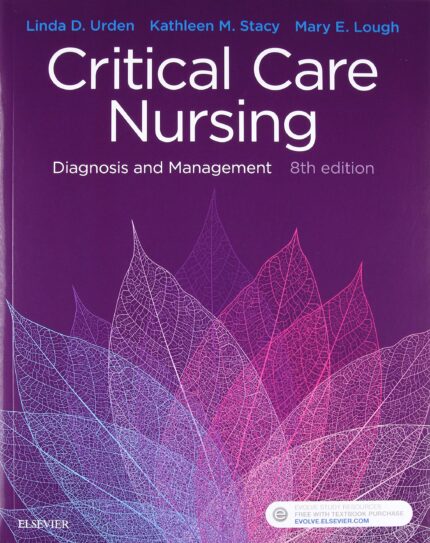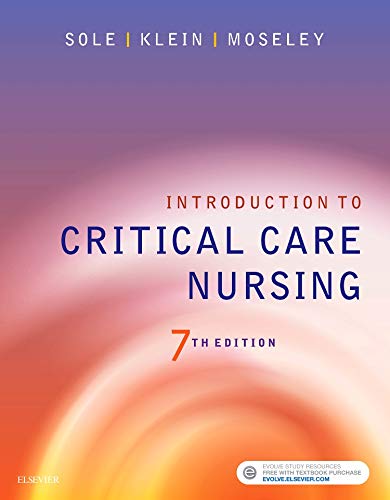Test Bank for Maternal Child Nursing Care 2nd Edition by Ward
Chapter 1: Traditional and Community Nursing Care for Women, Families, and Children
MULTIPLE CHOICE
1.The clinic nurse understands the new description of nursing art/aesthetics as the way that nurses and patients help each other through a circular process. What is the event that begins this process?
| A. | A health threat |
| B. | Experiencing new possibilities for health |
| C. | Hope and understanding for the future |
| D. | Relationship building |
ANS: A
Nursing aesthetics consists of the low-tech, high-touch caring in a nurse–patient encounter. This transformative process begins with a health threat. The event that begins the process is not experiencing new possibilities for health, hope and understanding for the future, or relationship building.
Cognitive Level: Knowledge/Remembering
Content Area: Pediatrics/Maternity
Patient Needs: Safe and Effective Care Environment: Management of Care
Integrated Process: Caring
Difficulty: Moderate
PTS: 1
2.A nurse manager in a community clinic is concerned because the local refugee population does not seek health care routinely. What action by the nurse would be most helpful?
| A. | Assess clinic staff and procedures for evidence of ethnocentrism. |
| B. | Put up flyers advertising the clinic’s services in local retailers. |
| C. | Reward preventative health patients with coupons for needed items. |
| D. | Try to meet with community leaders to work on the problem. |
ANS: A
Ethnocentrism is the view that the beliefs, values, and behaviors of one culture are superior to those of other cultures. Ethnocentrism is dangerous in health care because it is blind to the possibilities of other solutions and viewpoints and alienates people in need of health care. The nurse manager would be wise to assess the clinic’s staff and procedures for ethnocentrism. Meeting with a community leader is always a good idea to learn the viewpoints of the community, but unless ethnocentric behaviors change, it is unlikely that the refugee community will increase its use of the clinic. Flyers and incentives may also be helpful in some cases, but not as helpful as reducing the barriers imposed by ethnocentrism.
Cognitive Level: Application/Applying
Content Area: Pediatrics/Maternity
Patient Needs: Health Promotion and Maintenance
Integrated Process: Caring
Difficulty: Moderate
PTS: 1
3.The nursing faculty explains to students that ethnopluralism is an important force shaping health care today. What concept is most important in understanding this trend?
| A. | The decreased need for cultural competency |
| B. | The growth in one ethnic group in a single area |
| C. | The increased impact of diverse cultures on health care |
| D. | The percentage increase of the non-Caucasian population |
ANS: C
Ethnopluralism means diverse cultures. As the population of different ethnic (non-Euro-Caucasian) groups grows, their impact on health care will increase exponentially. Ethnopluralism is not just the growth of one ethnic group in one location. It is also more than just the percentage change in the non-Euro-Caucasian population, although that is part of the phenomenon. As ethnopluralism continues to impact health care, providers will need to be more, not less, culturally competent.
Cognitive Level: Knowledge/Remembering
Content Area: Pediatrics/Maternity
Patient Needs: Psychosocial Integrity
Integrated Process: Teaching/Learning
Difficulty: Moderate
PTS: 1
4.A nursing faculty member is explaining recent shifts in nursing practice. What change has been important in applying the nursing process?
| A. | A change to a spiral or circular process |
| B. | A focus on more independent nursing actions |
| C. | A return to the nurse-as-expert model of care |
| D. | An emphasis on attaining a disease-free state |
ANS: A
The nursing process has recently changed from a linear one to a spiral or circular process in which the patient/family is motivated toward promotion, maintenance, and restoration of health. The focus has not changed to include more independent actions, a return to the nurse-as-expert model, or an emphasis on attaining a disease-free state of being.
Cognitive Level: Comprehension/Understanding
Content Area: Pediatrics/Maternity
Patient Needs: Health Promotion and Maintenance
Integrated Process: Teaching/Learning
Difficulty: Easy
PTS: 1
5.A nurse is working in an urban clinic with a diverse population. What action by the nurse is most important?
| A. | Determine patients’ definitions of health and desired outcomes of health care. |
| B. | Explain policies such as appointment cancellations to ensure compliance. |
| C. | Learn to speak one or two common languages of the patients in the clinic. |
| D. | Read about different folk remedies common among the populations seen. |
ANS: A
Divergent populations enter the health-care system with differing beliefs about health care and wellness and differing expectations for the outcomes of such experiences. Understanding these expectations will help the nurse plan care that has a better chance of meeting these expectations. Learning languages and becoming familiar with folk remedies is helpful as well, but these two solutions are very limited in scope and a nurse cannot hope to become proficient in all the languages/behaviors of every population seen, leaving some patients with a lessened experience. Explaining policies is important too, but simply telling someone the rules does not take his or her cultural norms into account and may not be successful.
Cognitive Level: Application/Applying
Content Area: Pediatrics/Maternity
Patient Needs: Psychosocial Integrity
Integrated Process: Nursing Process: Assessment
Difficulty: Moderate
PTS: 1
6.A nurse is working with a minority group that has a high incidence of cardiovascular disease, including hypertension and stroke. When participating in a community health fair with this group, what action by the nurse will be most effective?
| A. | Educate the participants about weight loss and a low-sodium, low-fat diet. |
| B. | Explain the genetic basis for the high incidence of cardiovascular disease in the group. |
| C. | Help participants make lifestyle changes that are culturally congruent. |
| D. | Present statistics on the mortality and morbidity of cardiovascular disease. |
ANS: C
The ever-increasing culturally diverse population interacting with the health-care system brings its own beliefs, values, and health-related practices that impact health and well-being. In order to help people make healthy lifestyle changes, the changes must be culturally congruent and acceptable. Forcing an incongruent practice makes it highly unlikely to succeed. Education is important, but it must be done in a culturally congruent way. Pathophysiology and statistical knowledge, by itself, is not likely to be beneficial.
Cognitive Level: Application/Applying
Content Area: Pediatrics/Maternity
Patient Needs: Psychosocial Integrity
Integrated Process: Teaching/Learning
Difficulty: Difficult
PTS: 1
7.What does the practicing nurse understand to be the most important influence on interdependent, assertive nursing practice today?
| A. | Higher education of registered nurses |
| B. | Improved working conditions and salaries |
| C. | Increased numbers of female physicians |
| D. | Use of the nursing process for patient care |
ANS: D
Nurses were passive, deferential, and compliant to the knowledge and orders of mostly male physicians until the late 20th century. The nursing process changed that. The nursing process is a framework for systematic problem solving and implementation of both independent and dependent nursing actions. The nursing process allows nurses to make decisions regarding patient care based on critical thinking and clinical judgment. The other options listed were not vital in creating a nursing practice that is interdependent and assertive.
Cognitive Level: Analysis/Analyzing
Content Area: Pediatrics/Maternity
Patient Needs: Safe and Effective Care Environment: Management of Care
Integrated Process: Nursing Process
Difficulty: Difficult
PTS: 1
8.A child who has been hospitalized for a long time is preparing to go home, where care will be continued. Which action by the nurse is most beneficial to assist the family in this transition?
| A. | Advise the family to call the local visiting nurses association for home visits. |
| B. | Call the child’s school to inquire about requirements for returning to school. |
| C. | Consult a social worker to help evaluate insurance coverage and transportation. |
| D. | Give the family brochures for the local support group for chronically ill children. |
ANS: C
Preparing a family for home-based care, or other community-based care, involves ensuring that the family is able to provide the care needed by the child at home or in another setting. This can include discussing specialized equipment in the home, health insurance coverage, transportation, and/or returning to school. If the family needs or desires visiting nurses, the nursing staff or social worker at the hospital should arrange this for the family. Calling the school to get information about the child’s return to school yields helpful information, but may not be needed yet, and is too limited in scope to be the best answer. Simply giving parents brochures for support groups may or may not be helpful; the parents may not be literate or may not understand the benefit without discussion.
Cognitive Level: Analysis/Analyzing
Content Area: Pediatrics/Maternity
Patient Needs: Health Promotion and Maintenance
Integrated Process: Communication and Documentation
Difficulty: Difficult
PTS: 1
9.A nurse manager wants to make the pediatric clinic a more family-centered health-care setting. Which of the following actions by the nursing staff would best meet this goal?
| A. | Encourage family members to be present in the exam room and to ask questions. |
| B. | Incorporate the use of a community health map for all new patients in the clinic. |
| C. | Recognize family members as experts on their child and incorporate them in decision making. |
| D. | Use evidence-based practice to develop policies and procedures used in the clinic. |
ANS: C
The role of the family-centered nurse is to facilitate and assist the family in making informed choices that lead to the outcome the patient and family desire. This requires the nurse to give up the paternalistic role of authority on health care. The family knows the child best and should be assumed to make decisions that are in the best interests of both child and family. The other options are all good interventions, but are too limited in scope to be the best way to create a family-centered environment.
Cognitive Level: Analysis/Analyzing
Content Area: Pediatrics/Maternity
Patient Needs: Psychosocial Integrity
Integrated Process: Caring
Difficulty: Difficult
PTS: 1
10.A clinic nurse is explaining to a student nurse the function of the community health map in assessing families. Which description of this assessment tool is most accurate?
| A. | It assesses how the family interacts with outside social systems. |
| B. | It locates health-care settings in, or close to, their neighborhood. |
| C. | It outlines family problems and social resources to help with them. |
| D. | It shows how the health of the community impacts each family. |
ANS: A
A community health map is an assessment tool for family structure, function, and support networks. It displays significant related data and helps the nurse focus on the family as it interacts with the social systems within and around the family. Its purpose is not to locate local health-care settings. The focus is on family health and past successes and current strengths, not on family problems. Correlations can be made between the health of the community and the health of those living in that community, but this is not the purpose of the community health map.
Cognitive Level: Comprehension/Understanding
Content Area: Pediatrics/Maternity
Patient Needs: Health Promotion and Maintenance
Integrated Process: Teaching/Learning
Difficulty: Moderate
PTS: 1
11.A nurse wishes to improve his or her cultural sensitivity while working with patients. Which action by the nurse would best indicate progress toward this goal?
| A. | Demonstrate good knowledge of different cultural health beliefs |
| B. | Effectively respond to the needs of people of different cultures |
| C. | Interact respectfully with patients who have differing health beliefs |
| D. | Recognizes that he or she will never be the expert in other cultures |
ANS: C
Cultural sensitivity is a way of approaching people who hold health beliefs different from one’s own. A nurse with this characteristic is respectful of and open to others. Cultural competence is the ability to interact effectively with people of different cultures and requires a certain level of knowledge about those cultures. Cultural humility is the recognition that one will never master all information about another culture.
Cognitive Level: Analysis/Analyzing
Content Area: Pediatrics/Maternity
Patient Needs: Psychosocial Integrity
Integrated Process: Caring
Difficulty: Difficult
PTS: 1
12.A nurse manager is evaluating staff members on their cultural competence. Which action best demonstrates this characteristic?
| A. | Attends workshops on cultural diversity and health practices |
| B. | Participates in community health events with minority populations |
| C. | Plans care with the family members within their cultural beliefs |
| D. | Uses family members as interpreters to make them feel important |
ANS: C
The culturally sensitive nurse is able to understand and respond to the needs of individuals and families from different cultures. This nurse plans interventions with a solid knowledge of the values and practices of the members of the culture. Being open, listening to the family, and involving them in care demonstrates respect, unifies the nurse–patient relationship, and will motivate the patient (and family) to make positive health changes. Attending workshops is a good way to learn about diverse cultures and attending community events with diverse populations can increase cultural knowledge, but these actions are too limited in scope to demonstrate cultural competence. Nurses should use professional interpreters when needed.
Cognitive Level: Evaluation/Evaluating
Content Area: Pediatrics/Maternity
Patient Needs: Psychosocial Integrity
Integrated Process: Caring
Difficulty: Difficult
PTS: 1
13.A nurse is incorporating a cultural assessment into nursing care. Which assessment question by the nurse leads the supervisor to conclude that this nurse needs further education on cultural assessment?
| A. | What customs and traditions are important to you? |
| B. | What kind of insurance coverage do you have? |
| C. | When you are stressed or worried, what comforts you? |
| D. | Who in your family is important for support? |
ANS: B
Cultural influences include family support systems, religious and spiritual beliefs, customs and traditions, communication patterns, coping strategies, and problem-solving techniques. Asking about insurance coverage is not directly related to culture, although this can give information about the patient/family’s living environment and ability to access resources.
Cognitive Level: Evaluation/Evaluating
Content Area: Pediatrics/Maternity
Patient Needs: Psychosocial Integrity
Integrated Process: Communication and Documentation
Difficulty: Moderate
PTS: 1
14.A nurse is working with a cultural group that has many proscriptions against women seeking health care. What action by women in this community would indicate that they have successfully negotiated a new role in seeking care?
| A. | Are able to make and keep medical appointments |
| B. | Can afford to pay for desired health-care services |
| C. | Follow their traditional roles and responsibilities |
| D. | Seek health-care advice from family members |
ANS: A
Cultural proscriptions are beliefs, practices, and values of a group that tell women and children what they should not do. In many traditional cultures, women do not have permission, decision-making power, or means to access the health-care system. If the women from such a culture successfully negotiate their roles regarding health care, they can access the health-care system on their own. The ability to afford services is not related, although cultural proscriptions might forbid women from making such a transaction. If they follow their traditional roles or seek health care from family members, they have not demonstrated a successful negotiation of a new role.
Cognitive Level: Analysis/Analyzing
Content Area: Pediatrics/Maternity
Patient Needs: Health Promotion and Maintenance
Integrated Process: Caring
Difficulty: Difficult
PTS: 1
15.A patient wishes to use complementary therapy when managing a chronic health condition. Which action by the nurse is most appropriate?
| A. | Advise the patient that stopping medical treatment may cause it to worsen. |
| B. | Inform the patient that there are no complementary therapies for this condition. |
| C. | Investigate herbs that can be substituted for prescription drugs. |
| D. | Suggest the patient add massage therapy to the medical regimen. |
ANS: D
Complementary therapy is nontraditional treatment that is used in addition to traditional medical care. Alternative therapies are used in place of traditional therapies. Adding massage to the medical regimen is an example of using complementary therapy. Substituting herbs for prescription medication is an example of alternative therapy. Because the patient is asking about complementary therapy, there is no need to warn him or her of the effects of stopping treatment. There are always complementary therapies that can be added to a medical regimen.
Cognitive Level: Analysis/Analyzing
Content Area: Pediatrics/Maternity
Patient Needs: Health Promotion and Maintenance
Integrated Process: Teaching/Learning
Difficulty: Moderate
PTS: 1
16.A nurse is working with a family that uses multiple complementary and alternative medicine (CAM) modalities. What action by the nurse is best?
| A. | Allow the family to continue these practices as desired. |
| B. | Assess how these practices reflect religious beliefs. |
| C. | Inform the family that most of these practices do not work. |
| D. | Provide evidence-based information about the therapies. |
ANS: D
The nurse working with individuals or families who use CAM practices should respect the beliefs, values, and desires of the patient. The nurse should encourage families to make decisions regarding CAM practices based on evidence and research into their effects. The nurse can best assist in this by providing and discussing information. Although the nurse cannot stop the family from using CAM, he or she should not pass up the teaching opportunity. Many CAM practices have demonstrated benefit, so telling the family they don’t work is false information. A culturally competent nurse will assess how religious and spiritual beliefs affect health-care practices, but the nurse needs to advocate for the patient/family by providing solid information.

